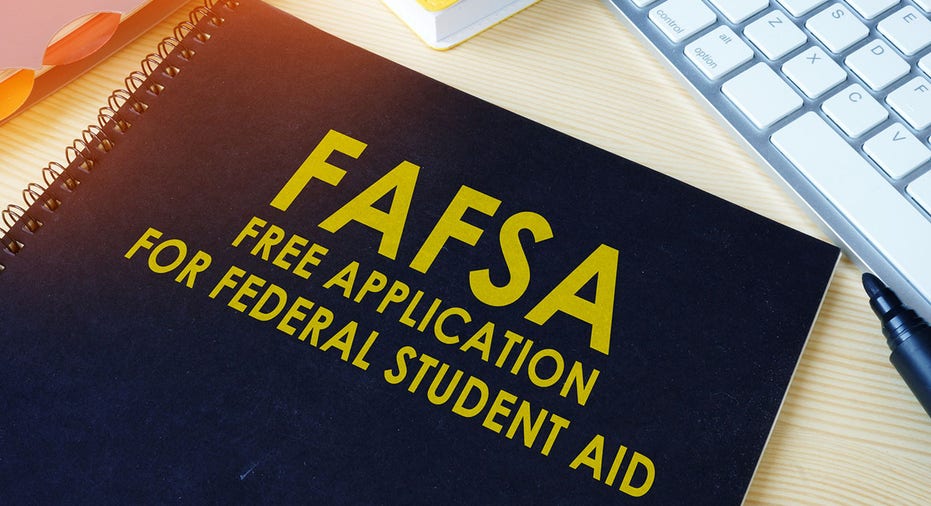FAFSA changes are coming but 52% of colleges aren't prepared, survey finds
Significant changes looming for FAFSA for 2023-24 school year and beyond

Major changes are coming to the FAFSA application next year, but higher education institutions are not ready. (iStock)
The Free Application for Federal Student Aid (FAFSA) will see some key changes starting in the 2023-24 academic year, but more than half of higher education institutions in the U.S. say they are not ready for those changes, according to a new study from Oracle and the National Association of Student Financial Aid Administrators (NASFAA).
While the U.S. Department of Education delayed most of the changes to the 2024-25 academic year, the new survey showed that 52% of higher education schools have not yet begun to prepare for the significant modifications coming to FAFSA. But despite not being prepared, 68% of respondents said they are completely or at least fairly confident in their ability to navigate the change.
"Following the passage of the Consolidated Appropriations Act, financial aid offices across the country are gearing up for significant federal methodology and FAFSA changes that will require adjustments to longstanding practices and processes," said NASFAA President and CEO Justin Draeger. "As this survey makes clear, there is both optimism and trepidation about our collective ability to make these changes in a way that facilitates a smooth transition for schools and students."
If you are currently in school or starting soon, and you need more financial aid than what you can receive through FAFSA, consider taking out a private student loan while interest rates are low. Visit Credible to find your personalized rate without affecting your credit score.
Schools facing new challenges implementing changes
Administrators may be faced with several challenges while working to implement the changes to FAFSA. The majority of respondents – about 74% – said that their greatest hurdle will be shifting from the Estimated Family Contribution (EFC) to the Student Aid Index (SAI) to determine borrower eligibility.
Another 61% said they foresee challenges with the new Pell Grant eligibility formula and 35% said they are worried about the simplified Federal Methodology, which eliminates some questions and data elements in its formula. They aren’t expecting to get much help, as 41% say they are slightly or not confident that the U.S. Department of Education will provide any timely, helpful guidance around the changes.
"The need for financial aid reform has never been more pressing, with schools and students still grappling with the economic impacts of the pandemic," said Vivian Wong, Oracle group vice president of higher education development. "While these provisions are an important first step in expanding access to education, institutions can’t enact this change alone – they need the right systems and support in place. Teamwork between the Department of Education, NASFAA, software providers and institutions will be key to ensure that schools and students are set up for success."
If you have filed for your FAFSA aid but need additional funding for school, consider taking out a private student loan. Visit Credible to compare multiple student loans at once and find the one with the best interest rate for you.
HIGHER EDUCATIONAL ACHIEVEMENT INCREASES HOMEOWNERSHIP CHANCES, STUDY SHOWS
What new changes are coming to FAFSA?
Congress passed a massive legislative package in December that provided funding for emergency pandemic relief measures, funding for the federal government and several big changes for higher education. While these changes have an effective date of July 1, 2023 for the 2023-24 school year, the U.S. Department of Education said it will phase in the significant impacts to college students’ FAFSA by the 2024-25 academic year. The new FAFSA application will be released on Oct. 1, 2022.
Here are some of the key changes:
- Drastically reduces number of questions on FAFSA form from 108 to a maximum of 36.
- EFC changed to SAI to accurately reflect how aid is calculated to determine aid eligibility, rather than expected family contribution. The EFC can drop to -$1,500 compared to the EFC’s low of $0.
- Students can see if they are Pell Grant-eligible based on income and family size before applying for financial aid.
- Income protection allowance is changed, which shields part of students' and parents' income from being counted with determining how much can be put toward college. It now protects a greater percentage of earned income.
- Restores Pell Grant eligibility for incarcerated students and aid eligibility to students with drug convictions.
- Removes the requirement for male applicants to register for the Selective Service before age 26.
- Restores Pell Grant eligibility for those who didn’t graduate because their school closed down.
- Makes application process easier for former foster children or students experiencing homelessness.
If you've completed your federal financial aid application to determine your eligibility for grants and federal student loans but are seeking more college funding, a private student loan could help you pay for school while rates are at historic lows. Contact Credible to speak to a student loan expert and get all of your questions answered.
Have a finance-related question, but don't know who to ask? Email The Credible Money Expert at moneyexpert@credible.com and your question might be answered by Credible in our Money Expert column.




















